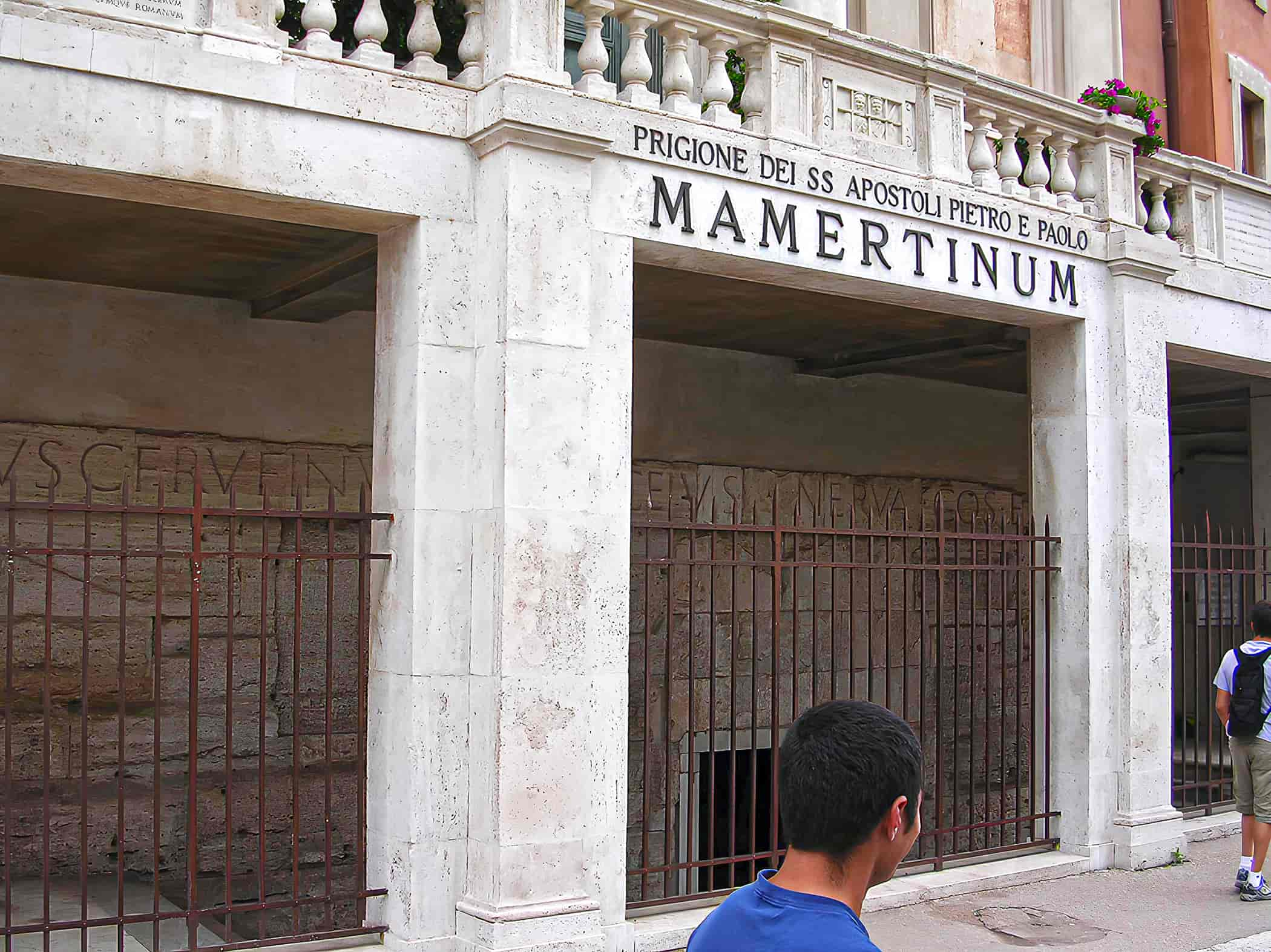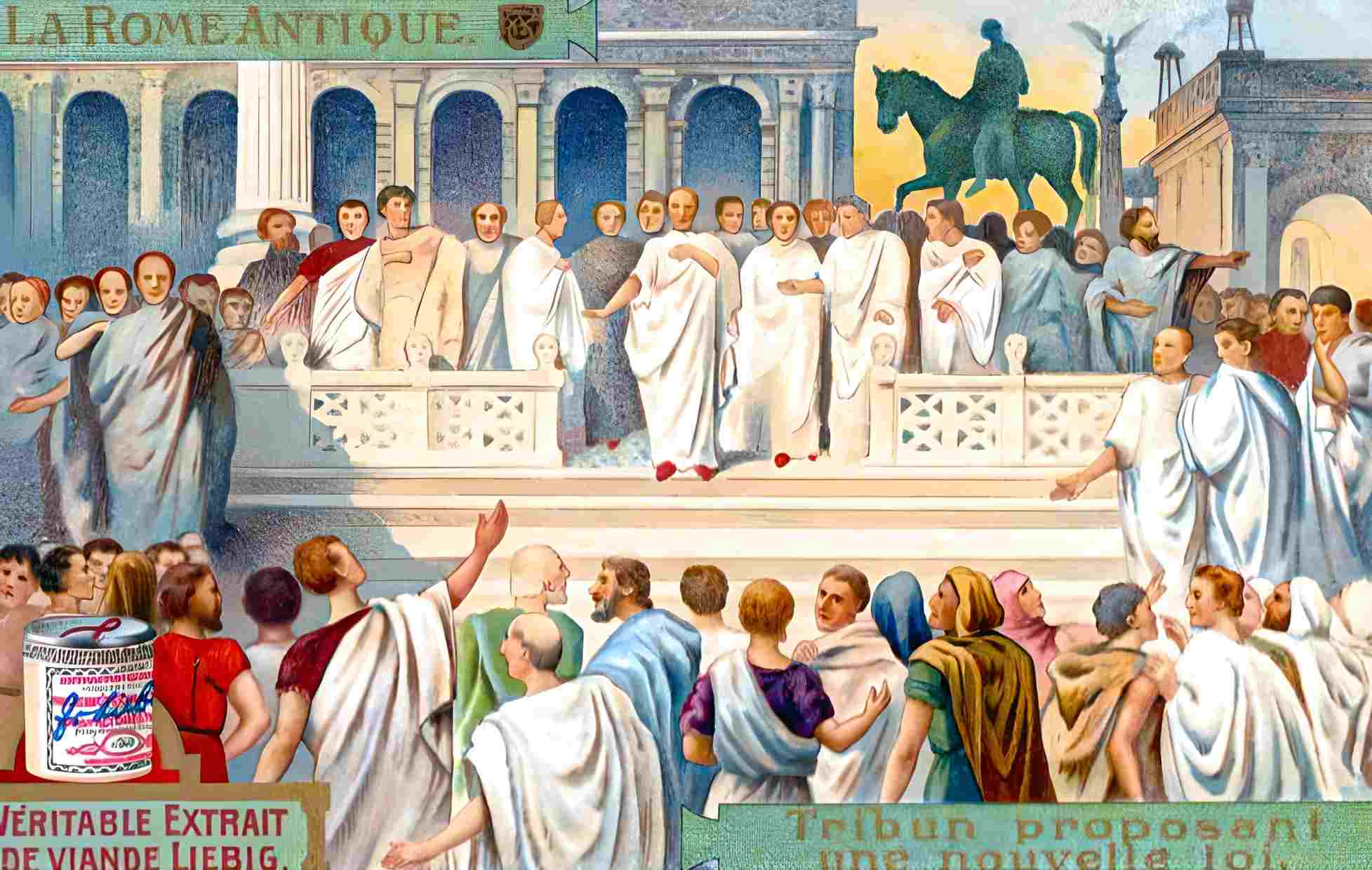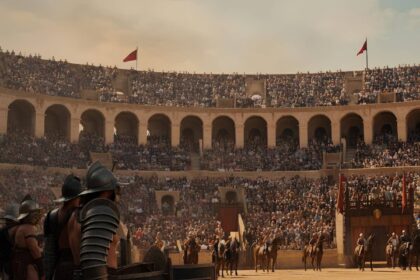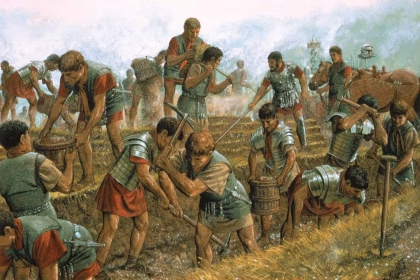- Ancient Mamertine Prison in Rome, dates back to 7th century BC.
- Held prisoners, including Saints Peter and Paul, under harsh conditions.
- Now part of two churches in Rome.
Mamertine Prison, which you can find in the center of Rome, Italy, has a long history that goes all the way back to the 7th century BC. It was first called the Tullianum, and it served as a prison, including a terrifying dungeon, right in the old heart of Rome, a place called the Comitium.
This old place sits on the side of a hill in the northeast part of town and looks out over some important old buildings from Roman times. Way back when, it was used as a fearsome place to lock up people who disagreed with the government, betrayed others, or even whole groups of people who were considered enemies of Rome.
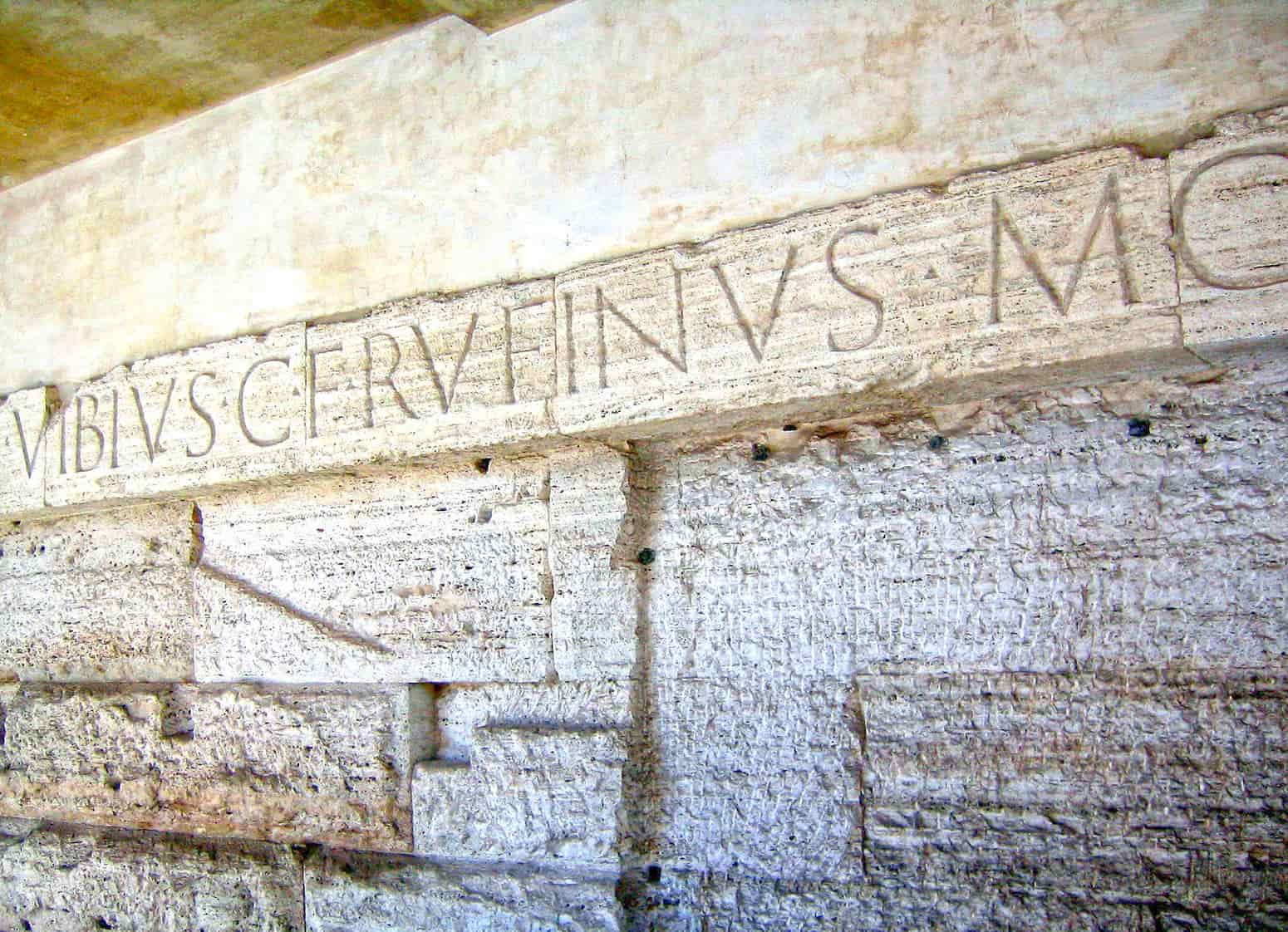
Furthermore, it’s got a strong link to Christian history, with stories that it might have held highly revered saints like Peter and Paul when they were locked up in Rome.
In the dark rooms of the Mamertine Prison, many famous people were once held as prisoners. These included individuals like Vercingetorix and Jugurtha. This prison was known for its part in carrying out executions, which were often done in inhumane ways.
According to the Historian Sallust:
In the prison, when you have gone up a little way towards the left, there is a place called the Tullianum, about twelve feet below the surface of the ground. It is enclosed on all sides by walls, and above it is a chamber with a vaulted roof of stone. Neglect, darkness, and stench make it hideous and fearsome to behold.
The War With Catiline by Sallust.
When it comes to the prison’s name, one theory suggests that “Tullianum” might have something to do with ancient Roman kings named Tullus Hostilius or Servius Tullius. Another theory connects it to an old Latin word “tullius,” which brings to mind the image of water shooting out, maybe hinting at a cistern of some sort. On the other hand, the name “Mamertine” seems to come from medieval times and could be linked to a Temple of Mars Ultor that once stood where the prison is now.
The First Builder of Mamertine Prison
According to one theory, Ancus Marcius built this prison between 640 and 616 BC. However, historical evidence suggests that it was constructed about 386 BC, just before Rome was first conquered by the Gauls. This prison might have gotten its name because Servius Tullius decided to expand it. This has yet to be confirmed.
Architecture of Mamertine Prison
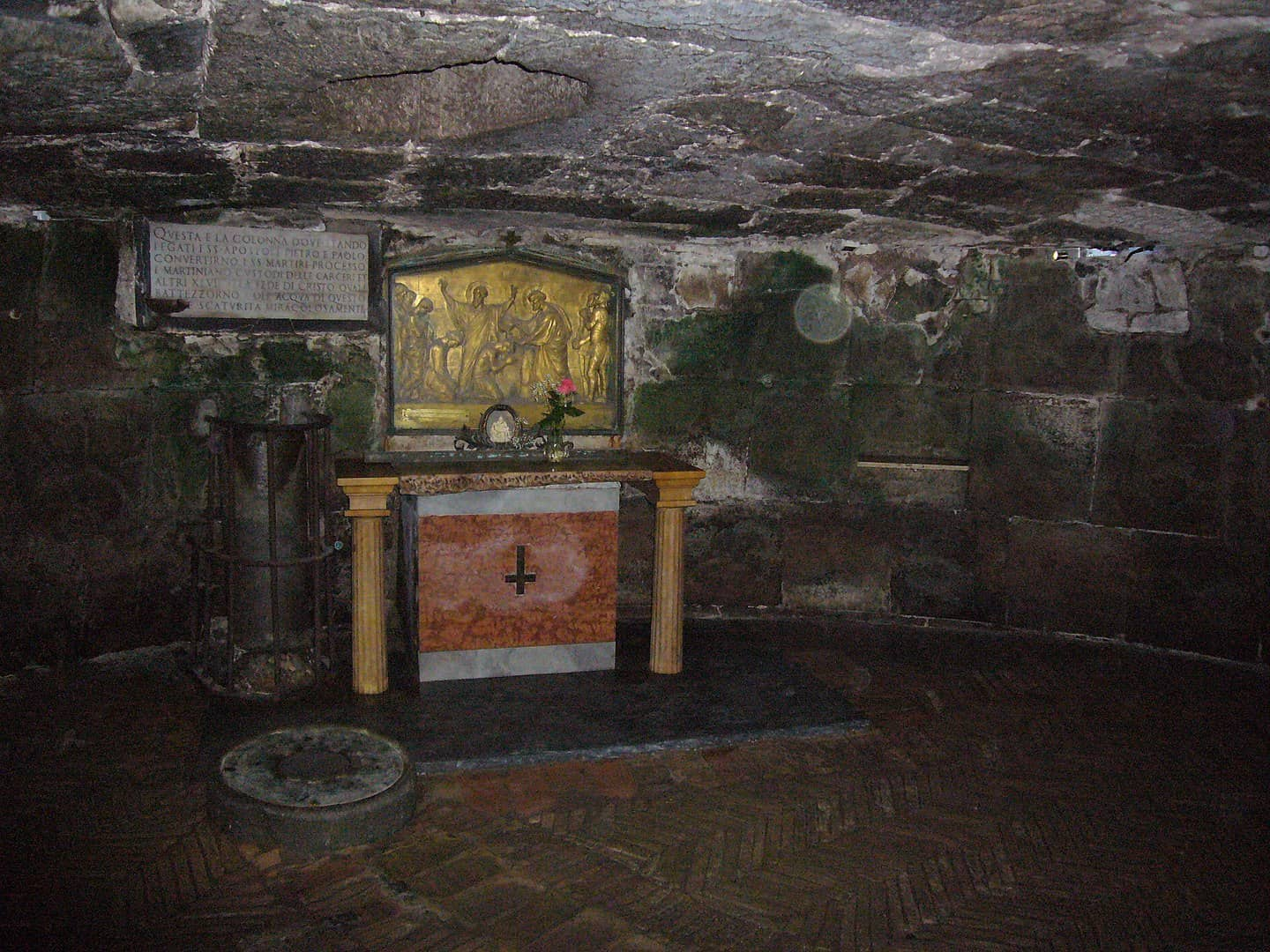
The prison consists of two primary chambers, one above the other. The lower chamber, known as the “Tullianum,” is the older of the two and is believed to have been the original cistern. It is a small, dimly lit space with a low, vaulted ceiling. In contrast, the upper chamber, added later, is slightly larger and has a more open feel. Both rooms are carved out of solid rock, which makes them durable and gives them a simple look.
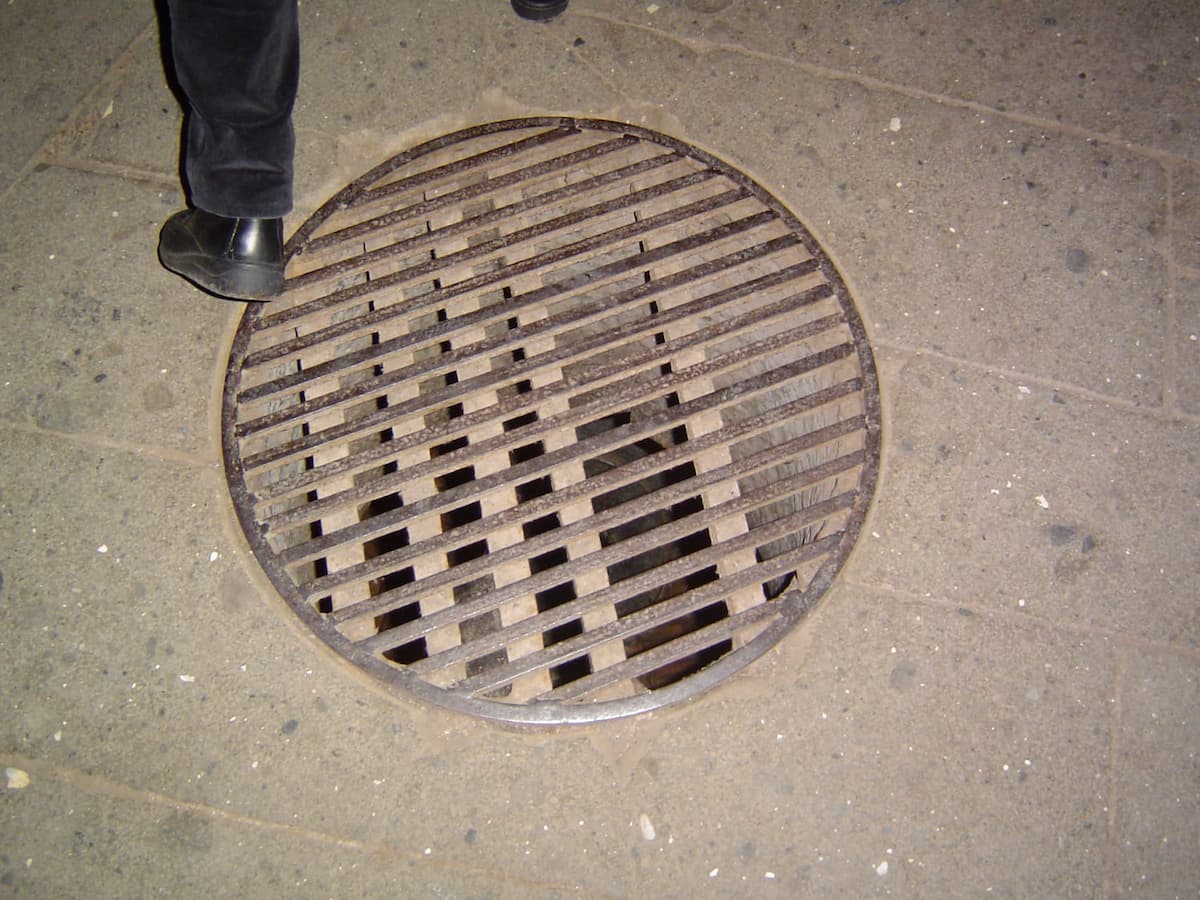
The transition from a water storage facility to a prison was achieved by installing a wooden floor in the upper chamber and creating a raised platform. This upper chamber served as the actual prison, while the lower one, due to its isolation and inaccessibility, became a site for executions.
Conditions in Mamertine Prison
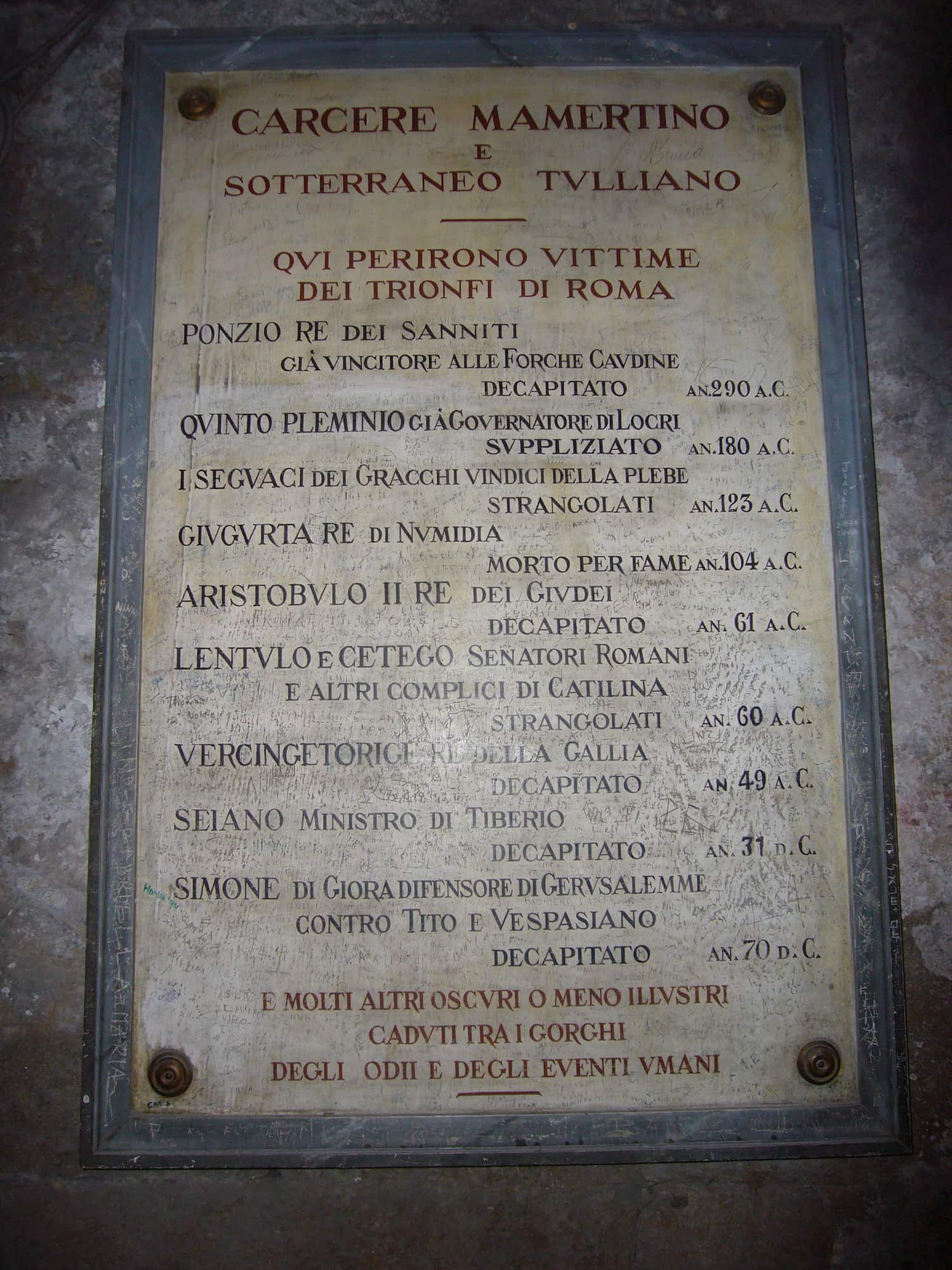
Inside Mamertine Prison, life was incredibly tough. It was a place where Roman laws and punishments were severe. One big problem there was that too many people were crammed into the prison. As Rome grew, even more people ended up locked up there.
The lower chamber of Mamertine Prison, known as the Tullianum, served as a site for executions. People who were sentenced to death had to deal with the terrifying possibility of either being choked or slowly dying of hunger in this underground chamber.
Notable Prisoners

Throughout its history, Mamertine Prison housed a range of noteworthy individuals, some of whom played significant roles in Roman history.
- Jugurtha
Mamertine Prison became well-known during the Jugurthine War (112–105 BC). This building was where the Romans imprisoned Jugurtha, the King of Numidia. Being locked up in that prison was a really important moment during the long and intense fight between Rome and Numidia.
- Saints Peter (Peter the Apostle) and Paul (Paul the Apostle)
Perhaps the most famous historical event linked to Mamertine Prison is the imprisonment of Saints Peter and Paul. According to Christian tradition, both apostles were held here during the reign of Emperor Nero. Their time in Mamertine Prison was a pivotal moment in the early days of Christianity. The Catholic Church considers the prison to be a sacred location, and pilgrims go there.
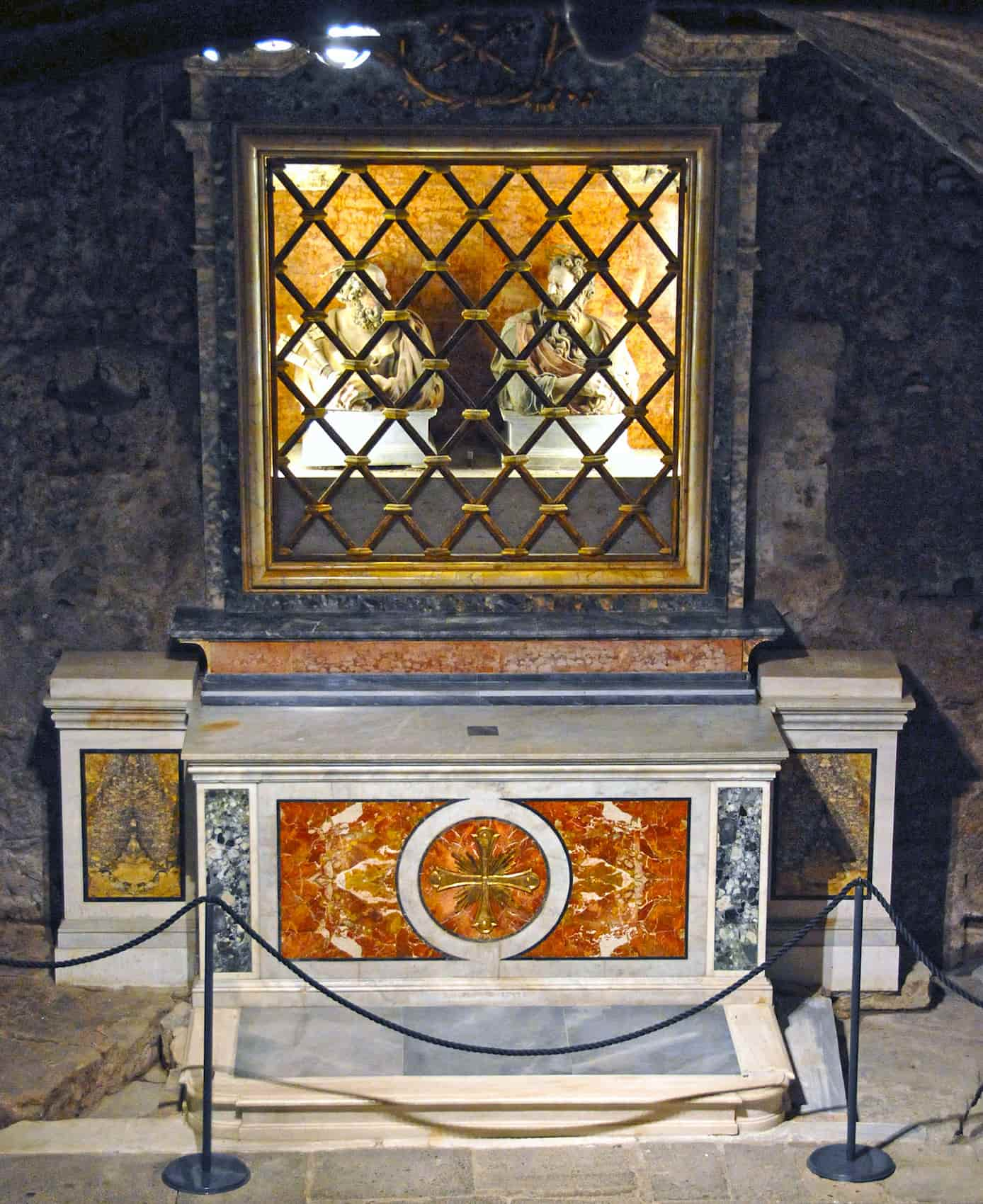
- Vercingetorix: Leader of the Gauls during the Gallic Wars. Executed after Julius Caesar‘s triumph in 46 BC.
- Simon bar Giora: During the First Jewish-Roman War, Simon bar Giora led a rebel faction against the Roman forces. Simon bar Giora was a Jewish military leader and one of the war’s key figures. But, in the year 70 AD, the Romans caught him, which marked the end of his fight against them.
- Eumenes III (Aristonicus): In 129 BC, Roman forces clashed with Aristonicus’ army in the Battle of Thyatira. Despite putting up a strong resistance, Aristonicus was defeated and captured. He was subsequently taken to Rome as a prisoner.
- Sejano: Lucius Aelius Sejanus, commonly known as Sejanus, was a prominent figure during the reign of Emperor Tiberius. In October 31 AD, Tiberius had Sejanus arrested and stripped of his powers. He was imprisoned in Mamertine Prison (Antiquity: Tullianum).
- Adiatorix: After the Battle of Gergovia, Adiatorix and Vercingetorix’s forces faced increasing pressure from the Roman legions. Adiatorix decided to retreat, but he was eventually captured by Roman forces led by Julius Caesar.
- Quintus Pleminius: Quintus Pleminius served as a Roman governor in Sicily during the Second Punic War. Pleminius was later transported to Rome and imprisoned, but he died before his trial concluded. The charge would have been a serious crime (perduellio), most likely to be brought before the centuriate assembly.
- Herennius Siculus: Gracchan sympathizer. Herennius Siculus was a haruspex and a friend of Gaius Sempronius Gracchus. He was taken into custody after being linked to Gracchus. He was about to be incarcerated in the Tullianum. To prevent that, he made the decision to take his own life by bashing his head on the doorpost. You don’t need a better case than this one to understand the grim nature of Mamertine Prison.
Present Situation
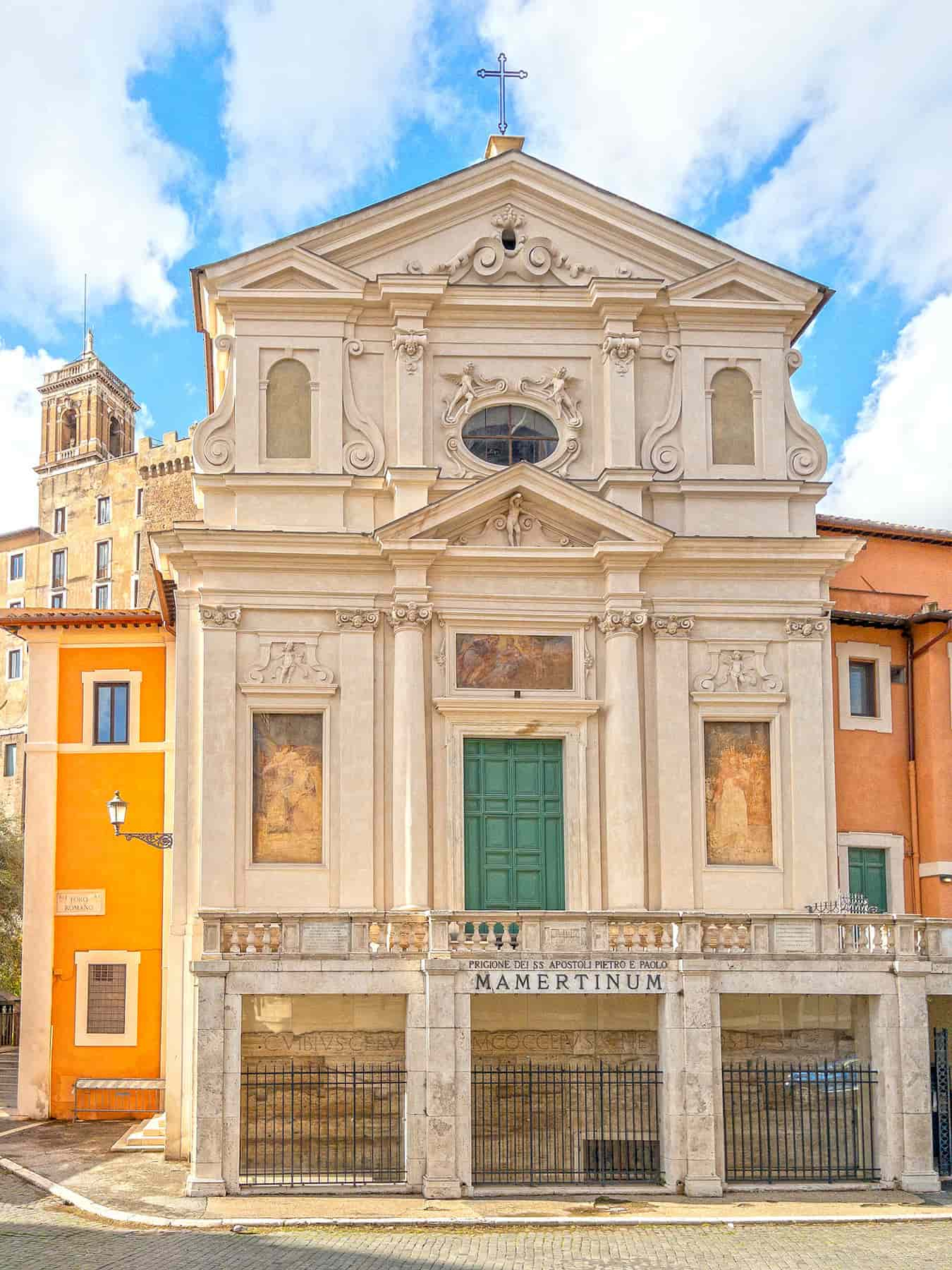
It is currently occupied by two overlapping churches: San Giuseppe dei Falegnami (above) and San Pietro in Carcere (below). The altar cross in the lower chapel is upside down since, according to tradition, St. Peter was crucified upside down.
A staircase leads to the lower chamber made of peperino blocks, circular, in the shape of a truncated dome, probably due to the construction of the basilica Porcia in 184 BC.
In 2009, it was subjected to excavation work that uncovered the frescoes of a church. Since 2010, it can be visited again.
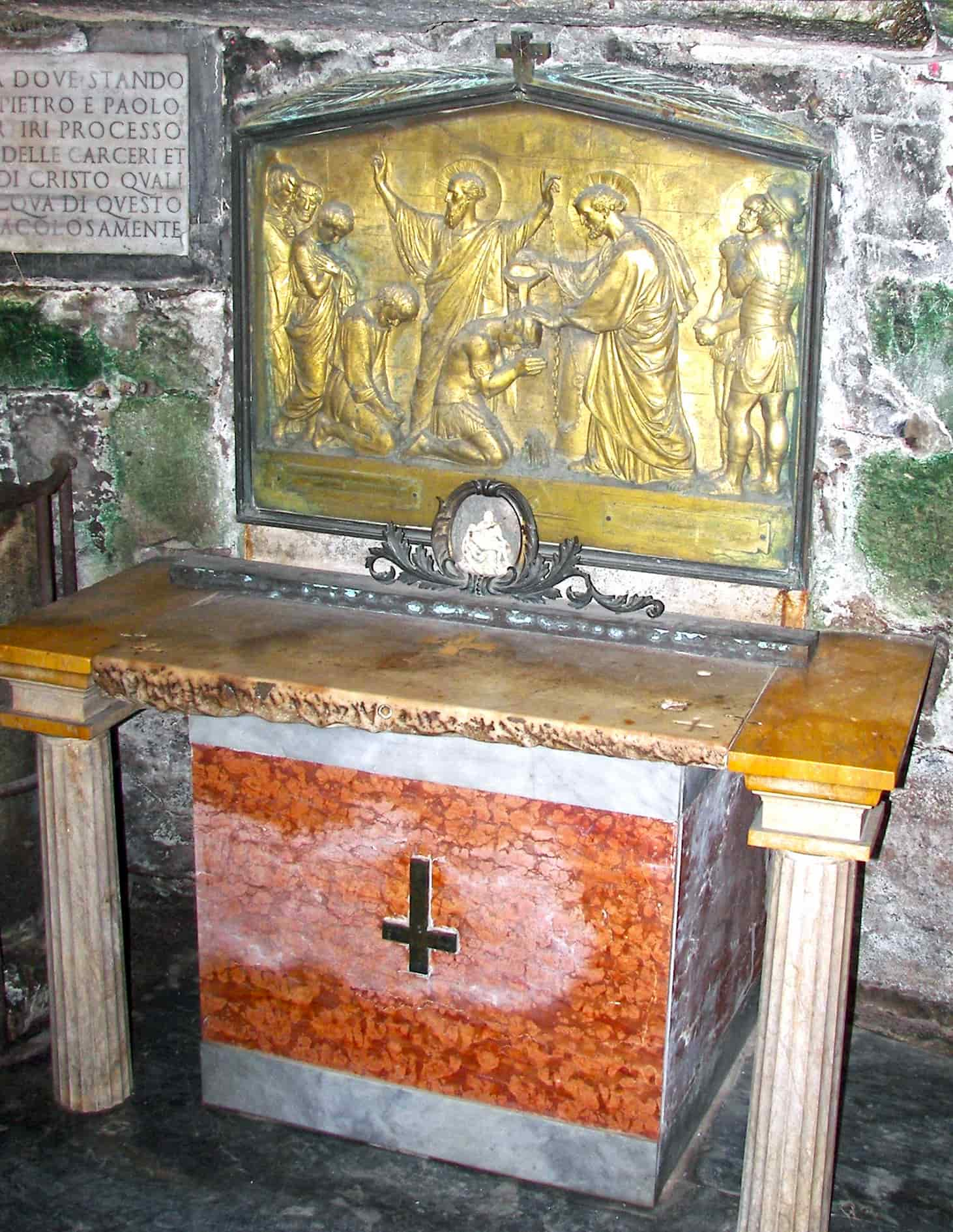
References
- LacusCurtius • Sallust — The War With Catiline (uchicago.edu)
- Edward M. Peters, “Prison before the Prison: The Ancient and Medieval Worlds,” en The Oxford History of the Prison: The Practice of Punishment in West Society (Oxford University Press, 1995), p. 14.


